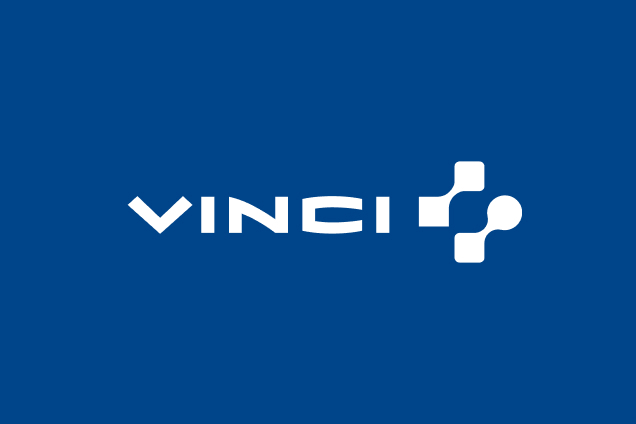Developing renewable energies
With VINCI Energies and Cobra IS, the two divisions of its energy business, VINCI is active at every stage in the production, transmission, distribution and use of electricity. At a time when climate change requires urgent action, renewable energy production needs to be tripled worldwide by 2030, and the Group is working to contribute to the energy transition.

Renewable energy production infrastructure
The soaring development of the renewable energies sector is generating a growing volume of business for VINCI Energies’ BUs. The BUs are primarily associated with building several production sites around the world, especially solar power plants. They are also involved in major offshore wind power projects, such as the mega-platforms currently under construction in the North Sea for converting the alternating current produced by wind farms into high-voltage direct current, before it is transported to onshore stations. In addition, in the hydropower sector, VINCI Construction is building infrastructure to produce renewable energy, including the Sambangalou dam on the River Gambia in Senegal and the Abdelmoumen pumped storage power plant in Morocco, a major hydroelectric facility with a capacity of 350 MW.
Transmission infrastructure and reconfiguration of the power grids
Downstream of the production sites, the development of renewable energies requires major investments in adapting, reinforcing and interconnecting electricity transmission grids. VINCI Energies is leading a large number of operations on behalf of public operators RTE and Enedis in France, Svenska Krafnät in Sweden and GCCIA in the Gulf States, while Cobra IS is building several thousand turnkey high-voltage transmission lines and substations in Brazil.
Operations on the grids represent an especially important technical challenge, since it constantly involves striking the right balance between supply and demand, by securing electricity supplies, at a time when these grids have to integrate a growing proportion of intermittent renewable energies, and the electric current can only be stored by converting it into another form of energy.
VINCI Construction is also involved in electrical infrastructure projects that include a significant civil engineering component. For example, in a consortium with VINCI Energies and Hitachi Energy, the division has been awarded a contract to build two converter stations with a combined capacity of 2 GW as part of the Inelfe interconnection programme between France and Spain.

VINCI, a renewable energy producer
Going back to its longstanding business model that was founded at the beginning of the 20th century on electricity concessions, VINCI is now financing, developing and operating renewable energy production sites, such as the mega-solar power plant commissioned in 2023 by Cobra IS in Belmonte, Brazil.
The energy asset portfolio developed by the division, which mainly includes solar power plants, represented a total capacity of 3.5 GW at the end of 2024, with 0.6 GW in operation in Brazil and 2.9 GW under construction in Spain, Brazil and Texas (United-States of America).
VINCI is also developing renewable energy production capacities on the rights-of-way at its concession infrastructure sites. In France, VINCI Autoroutes has identified around 1,000 hectares on its network that could eventually accommodate 200 solar power plants. By the end of 2024, 65 solar plants with a total capacity of 439 MWp were under development.
VINCI Airports has been involved in a similar approach for several years, drawing on the expertise of its specialist subsidiary SunMind, which evolved from the Intrapreneurs programme run by Leonard, VINCI's foresight and innovation platform. By the end of 2024, there were 39 solar power plants in operation across the VINCI Airports network, providing a total capacity of 72.3 MWp.



